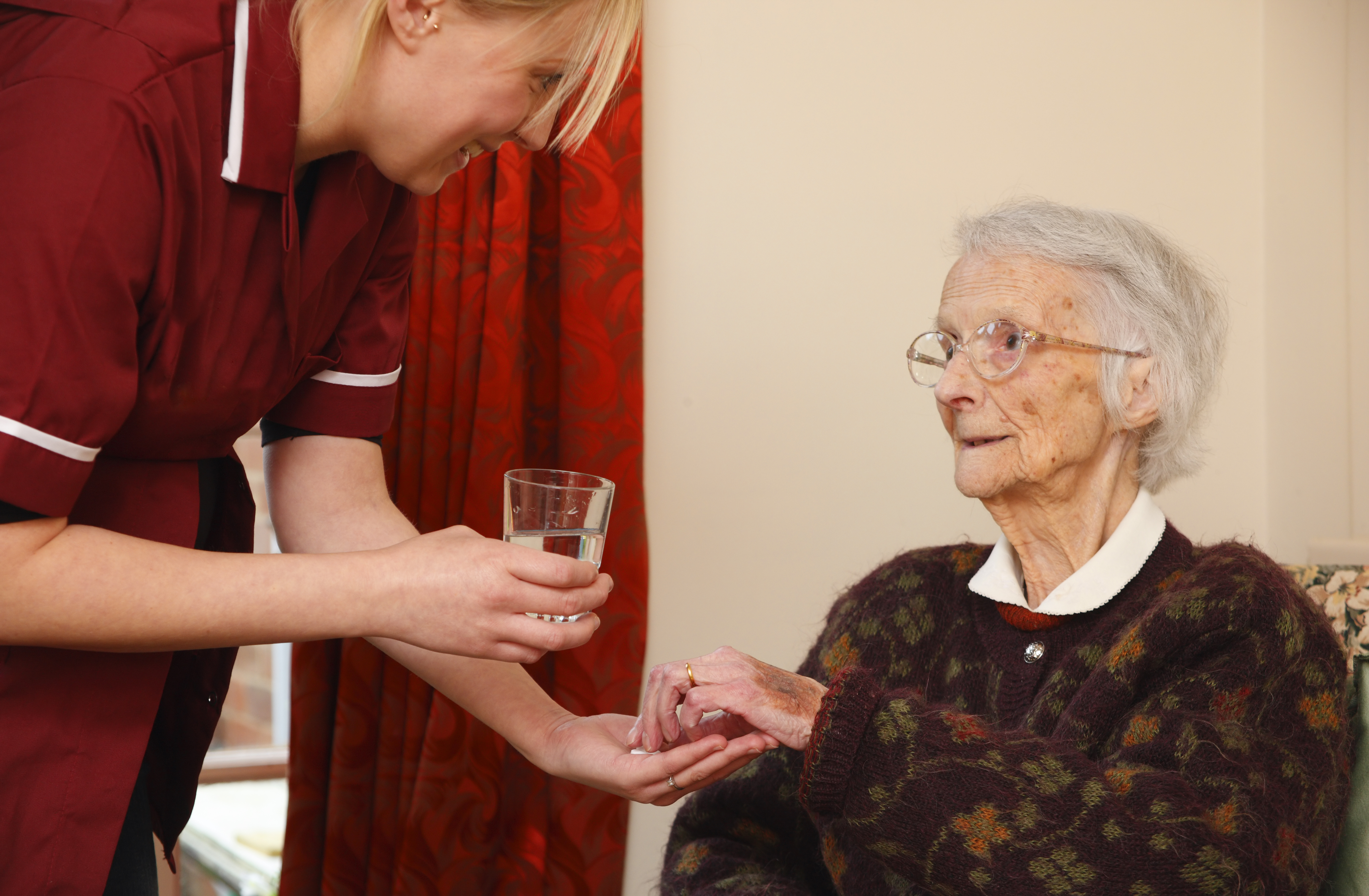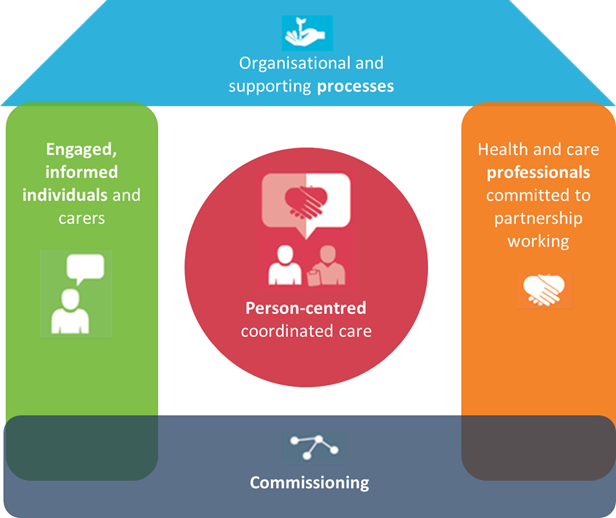by Laura Dobie
On Wednesday 25th February I attended a lecture by Dr Bee Wee, National Clinical Director for End of Life Care for NHS England, titled Care for older people towards the end of life: tensions and challenges. It was part of the Scottish Partnership for Palliative Care and Marie Curie winter lecture series, Can death get any better?, which is exploring ongoing challenges and unmet needs in death and dying. The event provided a very interesting and thought-provoking account of issues in palliative care for society, professionals, and individuals.
Context
Dr Bee Wee began by outlining the context for palliative care services today. She commented that people want to live longer, healthier lives, but there are challenges with an ageing population, a greater number of people with long-term conditions, and rising numbers of people with multiple conditions and complex needs. There have been changes in family size and location, with people caring at a distance, which presents problems for support. There are also difficulties with rising health and social care costs.
Problems with end of life care
She then went on to highlight some specific problems with end of life care. End of life care can be fraught, caregivers are now older, and people’s situations change with progressive illnesses. It is also difficult to assess the effectiveness of care, as other areas of healthcare are measured on mortality. She commented that monitoring the number of people dying in their place of residence does not necessarily give an accurate reflection of how well services are performing, as these figures combine numbers for both homes and cares homes, which include temporary admissions. There are also challenges with scaling up care, and tensions between policy and service delivery.
She highlighted the following key challenges for palliative care:
- Numbers/scale
- The needs of the population and the individual
- Resources
- Attitudes
Regarding attitudes, Dr Wee commented on issues with how people are labelled. Rather than discussing the frail elderly, if we look at older people living with frailty, this places the emphasis on a person who is living with a condition and how best to help this person.
What does good end of life care look like?
Dr Wee discussed frameworks for high-quality end of life care, highlighting the NICE Quality Standard for End of Life Care for Adults, which presents a detailed picture of what high quality end of life care should look like. The standard contains 16 quality statements, 14 centred on the patient and two on the workforce .
She also outlined the House of Care, a concept for the delivery of person-centred coordinated care, and described how it has been used to set out NHS England’s commitments to end of life care. The House of Care has patient-centred, coordinated care at its centre, with engaged and informed patients and carers and professionals committed to partnership as its pillars, commissioning as its foundation, and organisational and supporting processes as its roof. She also highlighted the need for engaged, involved and compassionate communities in addition to these elements.
Looking at person-centred care in practice, Dr Wee described one page profiles which are being used to improve care. These include a photo of the patient, what people admire about him or her, what matters to the person, and information on how best to support the patient. She also emphasised that older people at the end of life have experienced multiple losses, both in terms of bereavement and their sensory capacities, which should be taken into account in care.
Challenges for professionals
Dr Wee highlighted the following issues facing professionals:
- The vast knowledge and skills required, and the need to have this information at your fingertips.
- Specialism v generalism: the challenge of integrating care when patients see different specialists for different health problems.
- Multiple roles, which increase the risk of fragmentation.
- How to achieve team working and the systems to support this.
- The tyranny of protocols. Checklists are important tools and are good for ensuring safety in surgery, but it is important to ensure that these protocols do not eclipse the person.
Challenges for society
The following issues for society were raised:
- Where care takes place. Dr Wee questioned why people dislike care homes, but like hospices. She stressed the need to make care as good as possible, regardless of the location.
- Attitudes and conversations. End of life care isn’t something that people talk about, but it is an issue which it is necessary to discuss as a society, and also in terms of living well.
- Social media, which can have a positive effect if it is giving accurate information, but a damaging effect if information is uncontrolled and inaccurate.
- Are we willing to tackle inequalities?
- A lack of discussion around the affordability of care.
Tensions
A number of areas of conflict in care were highlighted:
- Risk v safety. Society is risk averse, and mistakes are met with public censure.
- Individual choice over equity and standardisation.
- Black and white v grey: issues in care are not always clear cut.
- Planning v responsiveness. While advanced care planning offers a greater chance of meeting people’s wishes, if all resources are directed towards this it can present problems when something unexpected happens.
- Good governance v performance management.
Looking forward
Dr Wee discussed a new approach to care which is focused on the outcome, rather than the process of care and what good looks like. She argued that it is necessary to resist micro managing from the centre, acknowledge the need for continued learning, and restore the conditions for trust.
The lecture was followed by a lively discussion on a range of issues, including the role of junior doctors, addressing growing inequality, resource problems and the role of hospices. The comments on measures and metrics were particularly interesting. Dr Wee questioned why we have measures and metrics which drive certain behaviours, and stressed need to shift public perception away from areas such as waiting lists in order to change measurements.
One delegate commented on the balance that needs to be struck between targets and care. Care is what matters to professionals, but it is also necessary to have accountability and metrics, which influence practitioners’ actions both positively and negatively.
Dr Wee commented that the fact that dying in hospital is used as a measure in palliative care and considered a negative outcome can lead to professionals attempting to discharge patients whatever the cost, when the focus should be on providing good care, wherever the location. Clearly this is an area which requires a great degree of consideration to develop measures which both ensure accountability and reflect the needs of patients.
I thoroughly enjoyed the lecture and felt that it gave me a thorough grounding in issues surrounding end of life care for older people, and provided much food for thought.
The Idox Information Service has a wealth of resources on health and social care. To find out more on how to become a member, contact us.
Further reading
Some resources may only be available to members of the Idox Information Service
What’s important to me: a review of choice in end of life care (2015) Department of Health
Actions for End of Life Care: 2014-16 (2014) NHS England
The final chapter (palliative care in Scotland), IN Holyrood, No 329 8 Dec 2014
The importance of home (end of life care services), IN Health Service Journal, 21 Mar 2014, pp6-9
Comfort comes when teams work together (end of life care), IN Health Service Journal, 3 Oct 2014, pp21-23
NICE Quality Standard for End of Life Care for Adults (2011) NICE
Share
Related Posts
The Knowledge Exchange Information Service will close on Friday 23 December. Our service will reopen on Tuesday 3 January 2023. The first bulletin of 2023 will be published on 11 January, and the first Topic Updates of the New Year ....
It is well recognised that the UK faces a shortage in STEM (science, technology, engineering and maths) skills, and that at current projections, this gap in skills and knowledge is only going to grow in the coming years. Before the ....



